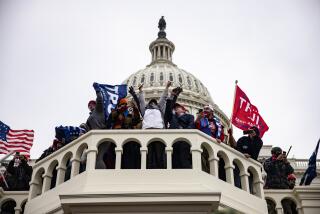For the racist roots of the recent mass shootings, look to the ‘Red Summer’ of 1919

- Share via
One of many fundamental facts of American history it took me way too long to learn was this: For most of our history, race riots, far from being something angry black people did in urban spaces, were something angry white people instigated and carried out against black people all over the country.
Law enforcers were quick to criminalize black populations in big cities like Los Angeles and Detroit for exploding in frustration in the 1960s, but that kind of unrest didn’t hold a candle to what whites across the country did in the early decades of the 20th century when they felt black people needed to be put in their place. The overtly criminal behavior they employed, always violent and often deadly, included stoning, shooting, lynching and burning entire communities to the ground.
The most infamous white riots happened across the nation between April and November of 1919, in what came to be known as “Red Summer.” During that time, dozens of racial skirmishes, stretching from Arizona to Washington, D.C., left hundreds dead, injured and displaced. Though the target of most of the lethal violence was black people, white rioters also directed their economic and political paranoia toward Germans, unionists and anyone sympathetic to Russia’s Bolshevik Revolution. A uniquely American fear that black people would team up with Marxists to bring about true economic and racial equality intensified the everyday racism that was already at a boiling point — including in Woodrow Wilson’s White House.
We are experiencing a version of Red Summer now. Whites are not rioting exactly, but individual white men have gone on the rampage in multi-ethnic, quintessentially American cities like El Paso, Texas, and Dayton, Ohio. And their actions feel an awful lot like white rioting by another means.
The context is broader and more diffuse these days, of course: The El Paso shooter targeted Latino immigrants, while the motives of the shooters in Dayton and Gilroy, where another young white man fired semiautomatic rounds into a festival-going crowd on July 28, are much less clear at this point. But the recent back-to-back shootings, taken together with so many others in recent years, in Charleston and Pittsburgh and Poway, to name a few, are clearly rooted in grievances nursed by a white male populace losing its sense of place and prominence.
They lash out with military-style guns meant to blindly mow people down, to kill as many as possible without knowing or even having to look at them — a lot like the indiscriminate nature of racism itself.
Another link between Red Summer and 2019 is racism emanating from the White House, aided and abetted by layers of appointees and elected officials unwilling to fully repudiate racist and xenophobic sentiments. Of course, Trump has got the patrician Wilson beat cold in terms of the loathsome bigotry he has spewed nearly nonstop since he started running for president four years ago. The difference between then and now is that in 1919, racism was the norm and white nationalism uncontroversial; Wilson openly admiring Klan ideology, for instance, was unsettling for some, but it was unsurprising. The president and many other white Americans sincerely believed that containing the Other was noble and necessary for keeping America great. If maintaining segregation sometimes morphed into domestic terrorism, well, that’s just how it had to be.
In 2019 we are supposed to know better — and want better. But a good chunk of us do not. Some 40% of voters still consistently support Trump, and what that says about our chronic inability to function as a cohesive American people is a truth we as a country are reluctant to face. I’ve heard a lot of discussion (again) about the shooters being mentally ill or economically adrift or internet-addled. We say such things to assure ourselves that these were individual acts, that America is not fundamentally racist anymore, that these rampages, hideous as they are, are about something else.
But what? In all the heated discussions among liberals and conservatives about this latest spate of violence, I have not heard anybody articulate what that something else might be. To say that hate has no place in America, as hater-in-chief Trump had the nerve to say with a straight face before cameras this week, is simply to lie.
Of course, there wasn’t even a pretense of tolerance in 1919. For the panicked white mobs bent on maintaining the social order by any means, tolerance was irrelevant, even dangerous. This is also the view of the growing club of white shooters today who advertise the fact that they feel threatened, hemmed in and pushed out by Mexicans, blacks, Jews, Muslims, LGBTQ people, women, and white liberals who aren’t down with tribal solidarity. Of course, most racially fearful whites aren’t out there trying to kill those who don’t look like them. But a lot of white people do embrace racial solidarity, even if they won’t kill for it.
The fact that most racially uneasy whites aren’t rampaging isn’t cause for true optimism. But it’s the shaky foundation on which we have to build. And the 60% of us who presumably reject Trump-era racism and xenophobia can help shore up that foundation dramatically by not just saying we believe in a unified America, but also by putting that belief into action.
Erin Aubry Kaplan is a contributing writer to Opinion.
More to Read
A cure for the common opinion
Get thought-provoking perspectives with our weekly newsletter.
You may occasionally receive promotional content from the Los Angeles Times.









